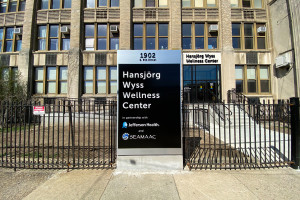Jefferson Aims to Acquire Aria Health
In the wild world of Philadelphia health care mergers, a doozie may be on the horizon.
On Tuesday, Jefferson Health and Aria Health signed a letter of intent to allow discussions on integrating Aria into Jefferson. The combined organization would have 22,900 employees, 4,384 physicians and 2,236 inpatient beds. It will also mean that three hospitals: Aria Health Frankford, Aria Health Torresdale, and Aria Health Bucks County would join Jeffersons roster of hospitals.
An Aria spokesperson tells me that no workers will lose their jobs if the merger goes through.
The signing of the letter was the result of a two-year planning process and both boards voted unanimously to authorize it. The 90-day, non-binding letter starts a due diligence process and the organizations expect the transaction to close in late spring 2016.
Robert Truitt, chair of the Aria Health board, said in a statement that the deal will allow both organizations to “ensure access to affordable, high-quality healthcare in Northeast Philadelphia and Bucks County, and across the region for years to come.”
Dr. Stephen Klasko, president and CEO of Thomas Jefferson University and Jefferson Health, called the deal a “bold step forward” and said it “brings critical capabilities as a high-quality, cost-efficient community health system.”
Back in May, Jefferson merged with Abington Health in one of the largest health care deals the region has ever seen. After the merger, Jefferson had 19,000 employees, 3,370 physicians, 2,482 nurses and 1,751 inpatient beds.
In signing the letter with Jefferson, Aria hopes the combined organization will do the following:
- Make significant investments in information technology, outpatient services and physician alignment.
- Improve the ability to participate in risk-bearing payment models.
- Be better equipped to simultaneously optimize patient experience (including quality and satisfaction), improve the health of populations and lower the per-person cost of healthcare.



